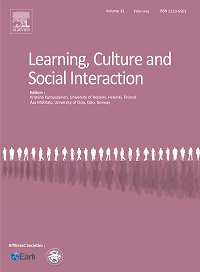Authors
Anders I. Mørch, Ellen Egeland Flø, Kristina Torine Litherland & Renate Andersen
Abstract
This article addresses the opportunities and challenges of turning a science, technology, engineering, and mathematics (STEM) classroom into a makerspace for hands-on experimentation with digital tools and materials in science education. In this qualitative case study, over a period of 16 weeks, video data were collected during making activities in an advanced placement science course with 19 pupils aged 12–16 years, and interviews were conducted.
We combined thematic and interaction analyses of empirical data and identified three themes: 1) engagement and spontaneous concepts, 2) programming and making physical objects, and 3) subject integration. Our conceptual framework for the analyses integrated two features of the Vygotskian sociocultural theory of learning: concept development as a dialectical process of scientific and everyday concepts and the “tool and symbol” duality.
Our findings show that both top-down and bottom-up approaches to integrating school subjects into a makerspace were effective but underused. We illustrate this by mapping pupils' shared understanding in a sociotechnical space, visualized as a process of “rising to the concrete”, which may require teacher's scaffolding at different levels of abstraction and use of instructional materials in different modalities.
